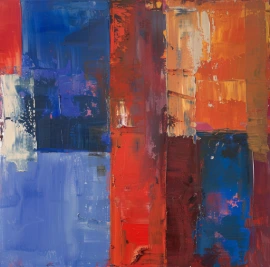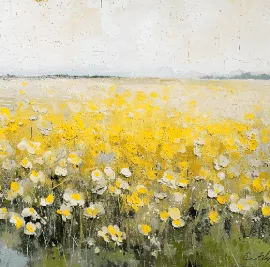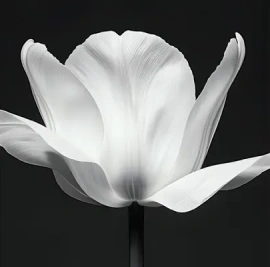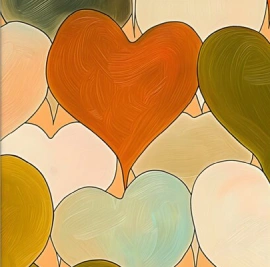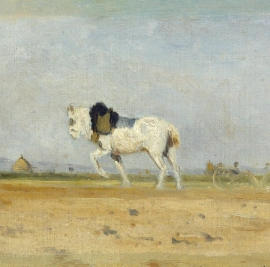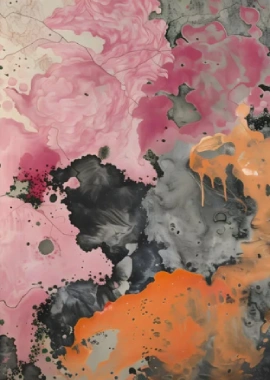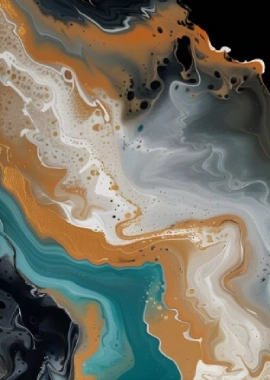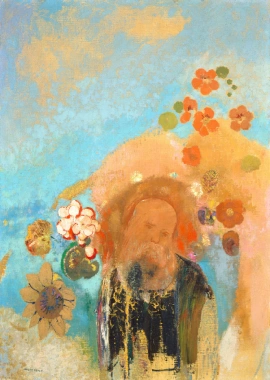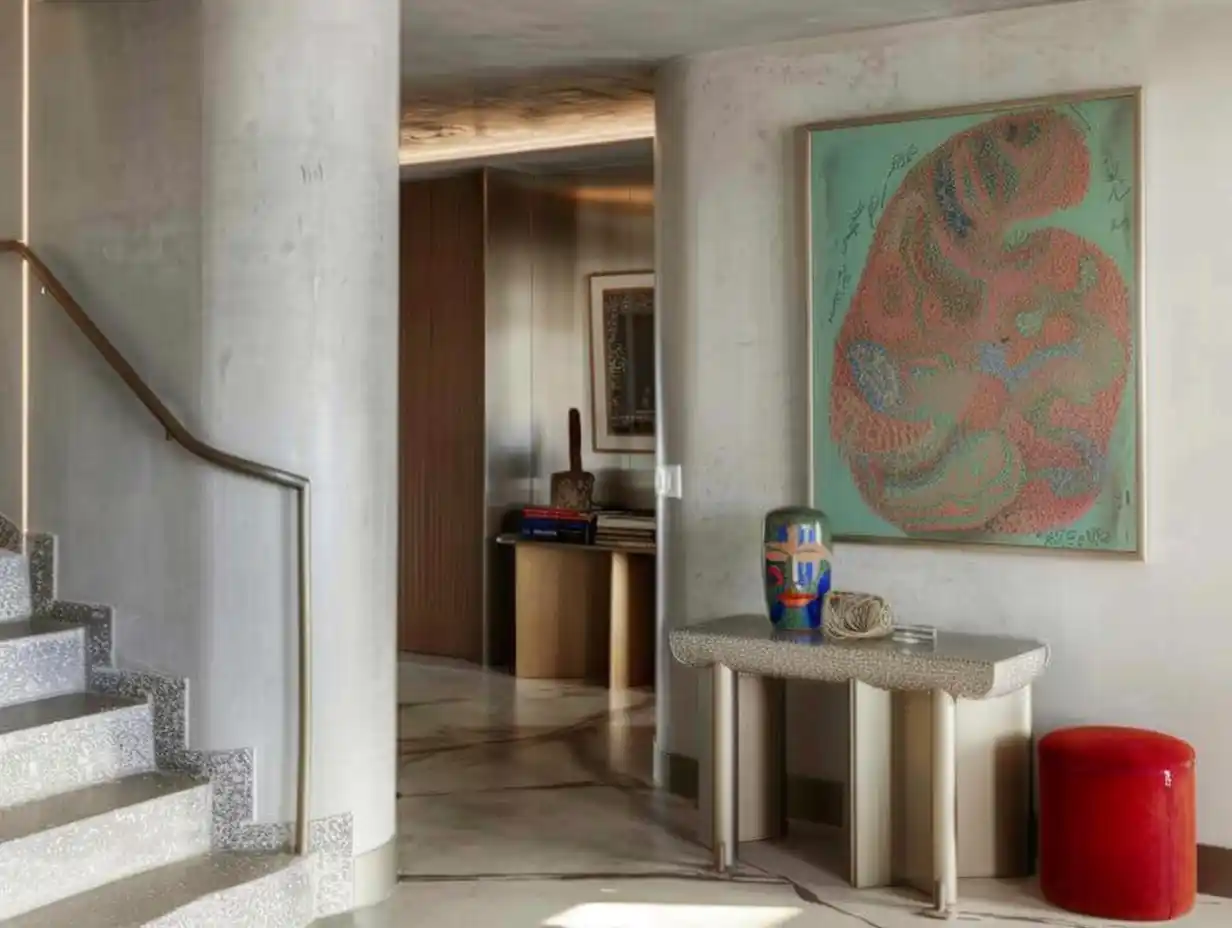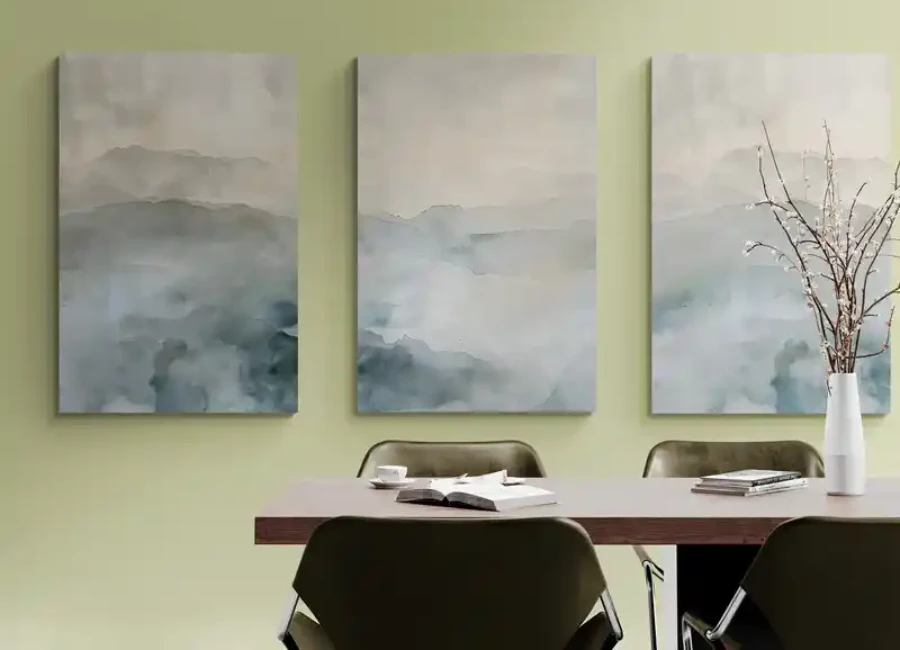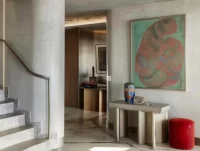Welcome, fellow art and decor enthusiasts! Today, we’re diving into a topic that has sparked endless debates in the realm of interior design: should your wall art match the colors of your house? It’s a question that has divided households, sparked heated discussions, and left many scratching their heads in confusion.
Let’s start with the basics. Wall art is more than just a decorative element – it’s a gateway to self-expression, a reflection of your personality, and a way to breathe life into your living spaces. And let’s not forget about color palettes – those carefully curated hues that set the tone and mood for your entire home.
Now, imagine this scenario: you’ve meticulously chosen the perfect wall colors for your living room, a soothing symphony of neutrals and earthy tones. But when it comes to selecting artwork, should you play it safe and stick to pieces that seamlessly blend into your existing palette? Or should you embrace bold contrasts and let your art be the star of the show?
The Case for Matching Wall Art and Home Colors
Proponents of the matchy-matchy approach argue that coordinating your wall art with your home’s color scheme creates a sense of visual harmony and flow. It’s like a well-choreographed dance, where each element complements the other, resulting in a cohesive and unified aesthetic.
Imagine walking into a room where the artwork effortlessly blends with the wall colors, creating a sense of calm and tranquility. It’s a subtle elegance that can make even the most chaotic of spaces feel like a serene oasis.
But wait, there’s more! Matching wall art and home colors can also help create a seamless integration of art into your overall design scheme. It’s like that final puzzle piece that completes the picture, tying everything together in a beautiful, harmonious package.
The Case for Contrasting Wall Art and Home Colors
On the other hand, there’s a camp of design enthusiasts who thrive on the idea of contrasting wall art and home colors. They believe that bold, striking contrasts can add visual interest and depth to a space, creating focal points that draw the eye and captivate the senses.
Imagine a room with crisp, white walls adorned with a vibrant, abstract painting in shades of deep crimson and electric blue. It’s a daring statement that commands attention and injects a burst of energy into the space.
But it’s not just about making a bold statement – contrasting wall art and home colors can also be a way to express your individuality and personal style. It’s a chance to break free from the confines of matchy-matchy and embrace your unique aesthetic.
Striking the Perfect Balance
Now, let’s address the elephant in the room: how do you strike the perfect balance between cohesion and individuality? Well, my friends, it’s all about finding that sweet spot where harmony and contrast coexist in perfect equilibrium.
First and foremost, consider the size and placement of your wall art. A large, bold piece can become the focal point of a room, allowing you to play with contrasting colors without overwhelming the space. Conversely, smaller pieces can be used to subtly introduce pops of color or complement your existing palette.
Next, let’s talk about color theory and complementary palettes. While contrasting colors can create visual interest, it’s important to choose hues that work together harmoniously. Think about using analogous or complementary colors to create a sense of balance and cohesion.
And let’s not forget about accents and textures. Incorporating different materials, patterns, and textures can add depth and dimension to your space, helping to tie together contrasting elements and create a sense of unity.
Finally, remember to balance bold and subtle elements. A room filled with too many loud, attention-grabbing pieces can feel overwhelming, while too much subtlety can leave the space feeling flat and uninspiring.


Expert Tips and Tricks
To help you navigate this colorful journey, we’ve gathered some expert tips and tricks from interior designers and art curators:
- Don’t be afraid to mix and match different art styles and mediums in the same room. Variety can add visual interest and depth.
- Consider the mood and ambiance you want to create in each room. Cooler tones can promote relaxation, while warmer hues can energize a space.
- When in doubt, start with a neutral base and introduce pops of color through wall art and accents.
- Experiment with different arrangements and placements until you find the perfect balance.
- Trust your instincts and don’t be afraid to break the rules – after all, true art lies in self-expression.
The Psychology of Color and Art
But wait, there’s more! Did you know that the colors and art styles you choose can have a profound impact on your mood and perception? It’s a concept known as color psychology, and it’s something worth considering when selecting wall art and color schemes.
Different colors can evoke specific emotions and associations. For example, shades of blue are often associated with calmness and serenity, while reds and oranges can stimulate energy and passion. Understanding these emotional connections can help you create a desired ambiance through the harmonious pairing of wall art and color.
Furthermore, the way we perceive art and color combinations can influence our perception of space. Cooler tones can make a room feel more spacious and airy, while warmer hues can create a cozy, intimate atmosphere.
Room-by-Room Considerations
Now, let’s dive a little deeper and explore how wall art and color schemes can be tailored to specific rooms in your home:
Living Room
The living room is often the heart of the home, where families gather and memories are made. When it comes to wall art and color schemes, consider pieces that reflect your personal style and create a warm, inviting atmosphere. Bold, vibrant colors can add energy and excitement, while softer hues can promote relaxation and comfort.
Bedroom
Your bedroom should be a sanctuary, a place where you can unwind and recharge. When selecting wall art and colors for this space, opt for soothing, calming tones that promote rest and relaxation. Soft blues, greens, and neutrals can create a serene environment, while carefully chosen artwork can add a touch of personality and inspiration.
Dining Room
The dining room is a space for entertaining and creating memorable experiences. When it comes to wall art and color schemes, consider pieces that set the mood for gatherings and celebrations. Rich, warm hues like reds, oranges, and yellows can create a cozy, inviting atmosphere, while bold, abstract art can spark conversation and add visual interest.
Home Office
If you have a dedicated home office, the wall art and color schemes you choose can have a significant impact on your productivity and focus. Cooler tones like blues and greens can promote concentration and calm, while energizing hues like yellows and oranges can boost creativity and motivation. Inspiring artwork can also serve as a source of motivation and encouragement.
Bathroom
Transform your bathroom into a spa-like retreat with the right combination of wall art and color schemes. Soothing blues and greens can create a tranquil, relaxing atmosphere, while nature-inspired artwork can bring a sense of serenity and rejuvenation. Consider incorporating natural elements like wood, stone, or plants to enhance the overall ambiance.
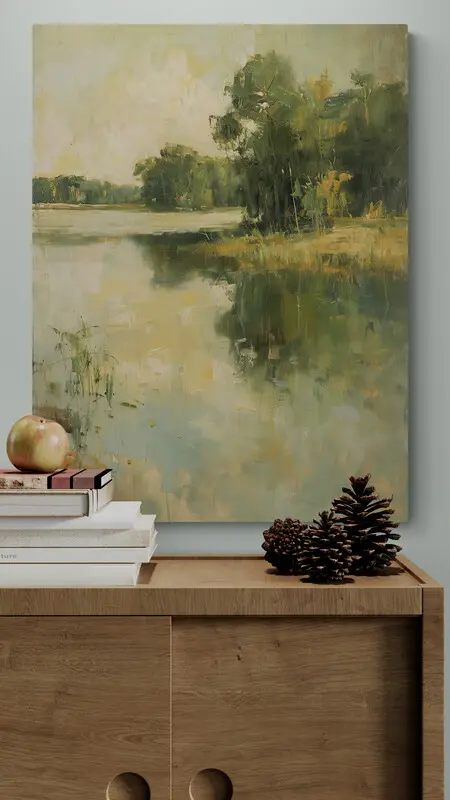
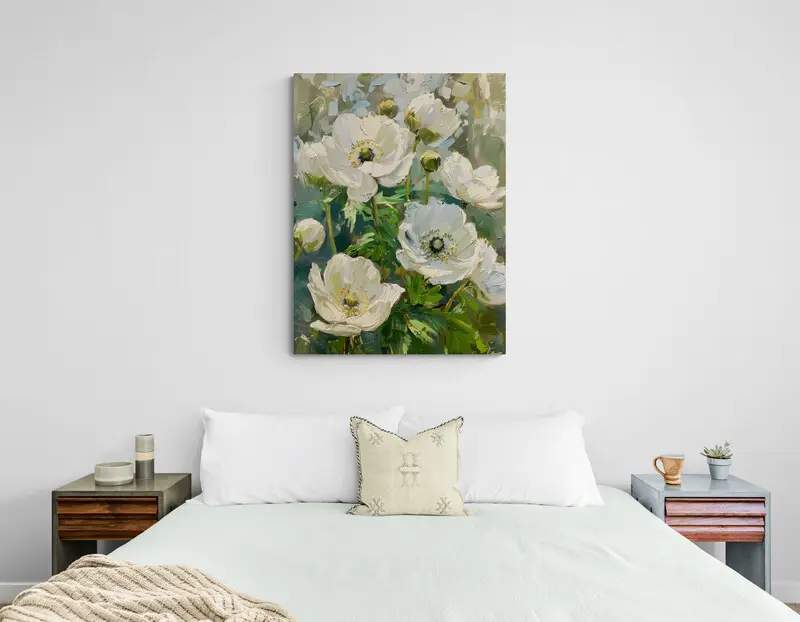

Trends and Inspiration
Of course, no discussion of wall art and color schemes would be complete without exploring the latest trends and sources of inspiration. From bold, geometric patterns to muted, earthy tones, the world of design is constantly evolving, offering new and exciting ways to express your unique style.
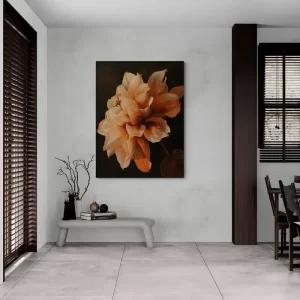 Look to art galleries, design magazines, and social media for inspiration. Follow your favorite artists and designers, and explore different color palettes and art styles. But don’t forget to infuse your own personal touches and unique elements – after all, true art lies in self-expression.
Look to art galleries, design magazines, and social media for inspiration. Follow your favorite artists and designers, and explore different color palettes and art styles. But don’t forget to infuse your own personal touches and unique elements – after all, true art lies in self-expression.
Conclusion
At the end of the day, the decision to match or contrast your wall art with your home’s color palette is a deeply personal one. There’s no one-size-fits-all solution, and the beauty lies in the freedom to experiment and find what resonates with your individual style and preferences.
Whether you choose to embrace the harmonious blending of colors or revel in bold, contrasting statements, the key is to create a space that reflects your personality and makes you feel at home. So, go forth, my friends, and let your walls be the canvas for your artistic expression. Embrace the art of harmony, and remember – it’s not just about decorating a space, but creating a sanctuary that nourishes your soul and ignites your creativity.
1. How do I choose wall art that complements my home’s existing color scheme?
When selecting wall art to complement your existing color scheme, consider pieces that incorporate colors from your home’s palette. You can either choose artwork that features the exact shades or opt for complementary or analogous hues on the color wheel. Alternatively, you can introduce new colors through the artwork but ensure they harmonize with the existing tones.
2. Can I mix and match different art styles and mediums in the same room?
Absolutely! Mixing and matching different art styles and mediums can add depth, interest, and personality to a space. Just be mindful of creating a cohesive look by tying the pieces together through a common color scheme, theme, or unifying element like frame styles or matting.
3. Is it better to have a few large statement pieces or several smaller works of art?
Both options can work well, depending on the size of your room and the overall aesthetic you’re aiming for. Large statement pieces can create a bold focal point, while several smaller works can add visual interest and allow for more variety. Consider the scale of your space and the impact you want the art to have.
4. How do I create a cohesive look when combining wall art with other decor elements?
To create a cohesive look, start by establishing a color palette and stick to it throughout the room. Choose artwork, furniture, textiles, and accessories that share common hues or complementary colors. Additionally, pay attention to textures, patterns, and shapes, and try to incorporate unifying elements that tie the overall design together.
5. Should I prioritize matching wall art to the wall color or the overall room color palette?
While both approaches can work, it’s generally better to prioritize matching wall art to the overall room color palette. The wall color is just one element, and by considering the broader palette, you can create a more harmonious and cohesive look throughout the space.
6. Can I use wall art to introduce new colors into a room, and if so, how?
Absolutely! Wall art is an excellent way to introduce new colors into a room without overwhelming the space. Start with a neutral base and use the artwork as an accent to bring in pops of color. Alternatively, you can choose a piece that incorporates multiple colors from the desired new palette and use it as inspiration for other decor elements.
7. How do I balance bold and neutral wall art in the same space?
To balance bold and neutral wall art, start with a neutral base and use the bold pieces as accents or focal points. Alternatively, you can create a gallery wall featuring a mix of bold and neutral pieces, ensuring they are harmoniously arranged and unified by common elements like frame styles or matting.
8. Are there any rules or guidelines for hanging wall art at the right height and distance?
While there are no hard and fast rules, there are some general guidelines to follow. Typically, artwork should be hung at eye level, with the center of the piece around 57-60 inches from the floor. As for distance, leave approximately 3-6 inches between the top of the piece and the ceiling, and at least 6-8 inches from the edges of the artwork to the corners or other walls.
9. Can I mix and match framed and unframed pieces on the same wall?
Yes, you can mix and match framed and unframed pieces on the same wall, but it’s important to do so intentionally and cohesively. Consider using a consistent frame style or matting for the framed pieces, and group the unframed works together for a more curated look.
10. How often should I rotate or rearrange my wall art to keep the space feeling fresh?
There’s no set rule, but it’s generally a good idea to rotate or rearrange your wall art every 6-12 months to keep the space feeling fresh and prevent visual fatigue. This also allows you to showcase different pieces from your collection and experiment with new arrangements and color combinations.

